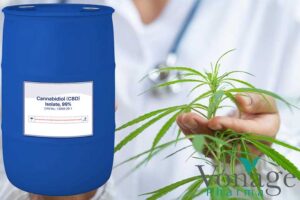The oxycodone market remains a critical segment within global pharmaceutical supply chains, driven by strong demand for potent pain management therapies and shaped by evolving regulatory frameworks. As providers navigate compliance challenges and growth opportunities, understanding market statistics and the role of specific dosage forms is essential for business decisions. (futuremarketinsights)
Current Market Size and Growth Outlook
Recent market research estimates the global oxycodone drugs market at approximately USD 7.06 billion for 2025, with forecasts reaching up to USD 11.53 billion by 2034 at a compound annual growth rate (CAGR) of 5.61%. Alternative research projects a slightly different trajectory, placing the oxycodone market at USD 3.39 billion in 2025 with expectations to climb toward USD 4.97 billion by 2035 at a 3.9% CAGR. This rapid growth is propelled by increasing demand for pain management in oncology, post-surgical recovery, and chronic illness treatment. (futuremarketinsights)
| Year | Market Size (USD) | CAGR |
|---|---|---|
| 2024 | 6.68 billion | — |
| 2025 | 7.06 billion | 5.61% |
| 2034 | 11.53 billion | 5.61% |
| 2025 | 3.39 billion | — |
| 2035 | 4.97 billion | 3.9% |
Providers must pay attention to both market size and year-on-year growth rates for effective planning. (futuremarketinsights)
Dosage Forms in Demand
Another important aspect of the oxycodone market is the variety of available dosage forms, which ensure flexible pain relief options and allow customization for patient needs. Vonage Pharma, supporting pharmaceutical providers, offers a broad selection, including: (ncbi)
These strengths mirror the most widely prescribed dosages globally, as both IR and ER tablets are commonly available in strengths ranging from 5 mg to 40 mg. Immediate-release forms provide fast pain relief, catering to acute therapeutic needs, while extended-release tablets address chronic pain management and facilitate convenient dosing schedules. (ncbi)
Market Segmentation and Trends
North America remains the largest market for oxycodone, accounting for a substantial portion of global revenue and driving trends in both prescribing practices and regulatory oversight. The market is segmented by product type—where short-acting (immediate release) formulations remain significant—and distribution channel, with hospital and retail pharmacies as key players. (precedenceresearch)
-
The short-acting segment (IR) is anticipated to maintain its leading position.
-
Hospital pharmacies dominate current sales, but retail pharmacies are gaining ground due to increased outpatient demand. (precedenceresearch)
Demand for extended-release formulations is increasing as healthcare systems emphasize treatment for chronic pain and prefer strategies that minimize dosing frequency. Formulary restrictions, regulatory changes, and growing investments in abuse-deterrent technologies are reshaping market dynamics while limiting diversion and misuse. (jheor)
Regulatory Landscape
Regulatory complexity is a defining factor for providers operating in the oxycodone market. In 2025, the DEA extended pandemic-era telehealth prescribing flexibilities for Schedule II controlled substances, allowing licensed providers to prescribe regulated medications via telehealth until December 31, 2025. However, these flexibilities exist alongside heightened scrutiny and litigation associated with opioid access, misuse, and overdose risks. (precedenceresearch)
Pharmaceutical producers and distributors must comply with region-specific requirements:
-
Thorough tracking and reporting of controlled substance batches.
-
Adherence to strict import/export licenses in cross-border transactions.
-
Compliance with health system formulary restrictions that can alter market share for specific products, especially ER formulations.
-
Ongoing investments in abuse-deterrent and tamper-resistant products as government agencies and public health organizations prioritize overdose mitigation.
With new regulatory measures and enforcement actions, providers must proactively update operational policies to minimize compliance risks while maximizing access to pain management solutions.
Outlook for B2B Pharmaceutical Providers
For B2B pharmaceutical providers, understanding both the regulatory landscape and emerging market statistics is essential. Growth prospects remain strong, with increasing patient populations and expanding palliative care services generating sustained demand for both IR and ER oxycodone products. Providers should prioritize supply partnerships with manufacturers who offer full documentation, GMP-compliant traceability, and regulatory support to ensure safe, reliable transactions. (mordorintelligence)
Immediate-release and extended-release oxycodone tablets—especially at commonly prescribed strengths of 5, 10, 15, 20, 30, and 40 mg—are well-positioned to meet ongoing therapeutic needs across hospital and retail pharmacy channels. These products are foundational for pain management and will continue to drive market share as providers adapt to evolving regulations and formulary requirements. (ncbi)
By focusing on reliable supply, regulatory compliance, and data-driven business planning, pharmaceutical providers can successfully navigate the complexities of the oxycodone market—delivering the right products to the right patients while meeting the highest standards of safety and legality.







